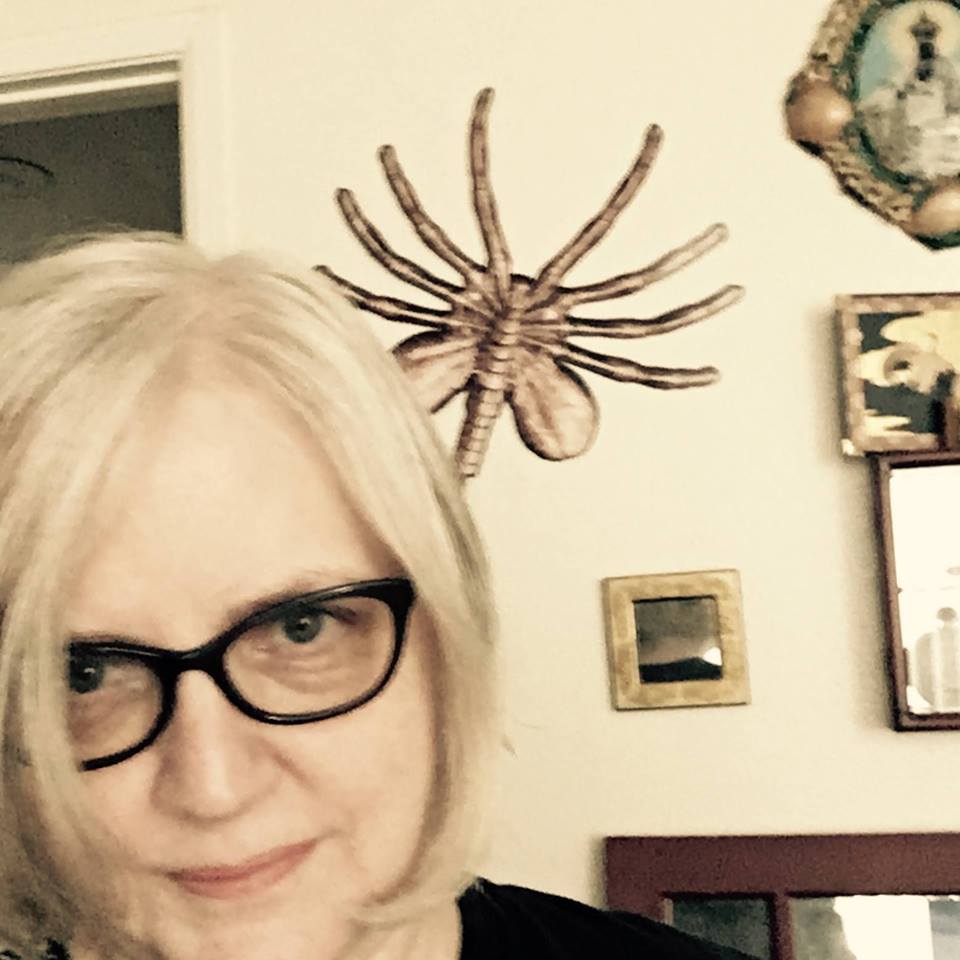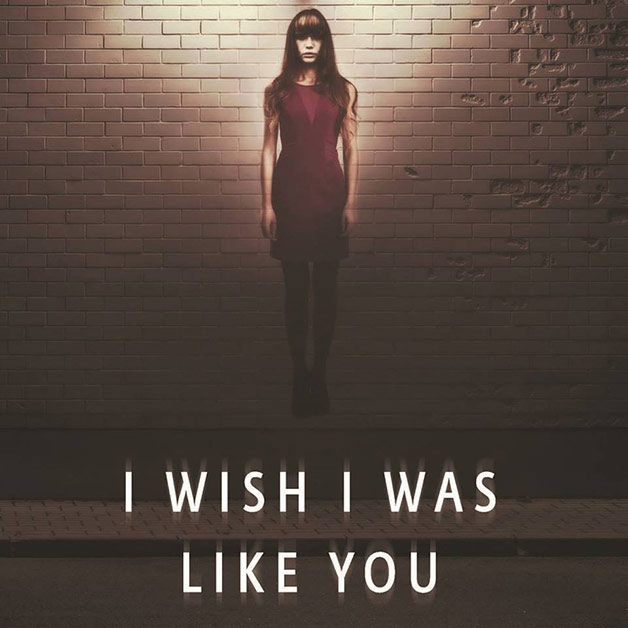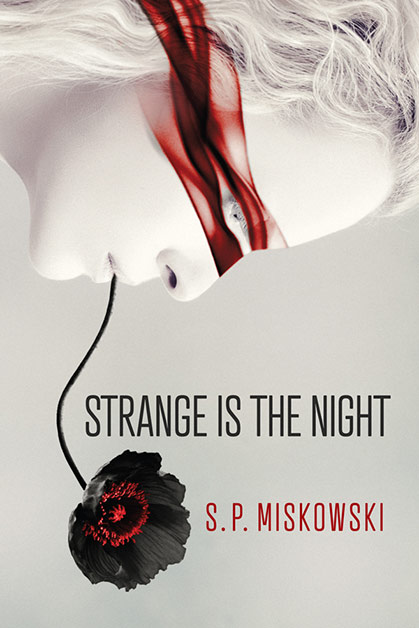 S. P. Miskowski is a three-time Shirley Jackson Award nominee, and is the recipient of two National Endowment for the Arts Fellowships and a Swarthout Award. Her stories have been published in Supernatural Tales, Black Static, Identity Theory, Eyedolon Magazine and Strange Aeons as well as in the anthologies Haunted Nights, The Madness of Dr. Caligari, October Dreams II, Autumn Cthulhu, Cassilda's Song, The Hyde Hotel, Darker Companions: Celebrating 50 Years of Ramsey Campbell, Tales from a Talking Board, and Looming Low. Her books include Knock Knock and three related novellas (Omnium Gatherum), Muscadines (Dunhams Manor Press), I Wish I Was Like You (JournalStone) and Strange is the Night (Trepidatio/JournalStone).
S. P. Miskowski is a three-time Shirley Jackson Award nominee, and is the recipient of two National Endowment for the Arts Fellowships and a Swarthout Award. Her stories have been published in Supernatural Tales, Black Static, Identity Theory, Eyedolon Magazine and Strange Aeons as well as in the anthologies Haunted Nights, The Madness of Dr. Caligari, October Dreams II, Autumn Cthulhu, Cassilda's Song, The Hyde Hotel, Darker Companions: Celebrating 50 Years of Ramsey Campbell, Tales from a Talking Board, and Looming Low. Her books include Knock Knock and three related novellas (Omnium Gatherum), Muscadines (Dunhams Manor Press), I Wish I Was Like You (JournalStone) and Strange is the Night (Trepidatio/JournalStone).
Alvaro Zinos-Amaro: You've shared that your work and your perspective on horror have been influenced by international horror films, particularly Thai, Korean and Japanese works. Can you talk a little about the specific aesthetic and approach to storytelling in these movies that resonates with you?
S.P. Miskowski: The 2004 Thai film Shutter boldly portrayed the significance of the female experience dealing with male violence and aggression. It definitely informed my views about readers and audiences and their willingness to consider important subjects via the horror genre.
My first novel was strongly influenced by Nang Nak (1999), an adaptation of a very old and popular Thai legend. It’s essentially a ghost story in which a young man has to face the terrifying transformation of his wife into a vengeful spirit, following her death during childbirth.
Many psychological and supernatural horror films I like are Korean (Tell Me Something, Phone, A Tale of Two Sisters, Acacia) or Japanese (Audition, Ringu, Ju-on, Dark Water) but this doesn’t mean I like all Korean and Japanese horror films—or that I’m an expert. Probably the attraction to these specific movies has a lot to do with my interest in women as powerful central characters.
I’m curious about the iconography of Japanese ghost tales. But what I’ve learned about making horror compelling has as much to do with a filmmaker’s approach as it has to do with a cultural tradition. I’m drawn to certain directors because of their seriousness. Takashi Miike and Hideo Nakata may employ time-honored themes, icons, and images but they make the material fresh by approaching it with a high degree of storytelling commitment and technical ingenuity. This is what I’m after. I like horror without apology or embarrassment.
I lost interest in U.S. horror films for several years because so much of Hollywood horror had become tongue-in-cheek and campy or silly. I turned to international horror around the year 2000. In the past few years there’s been a resurgence of serious English language horror like Get Out, The Babadook, and The Witch. But for a while there wasn’t much that appealed to me.
Not that horror has to be humorless or devoid of wit. Miike proved with One Missed Call that suspense and perfectly timed scares can be both amusing and disturbing. What I find uninteresting is a send-up of genre tropes or a slapdash approach without understanding why we watch or read horror in the first place. We need horror to be emotionally unsettling, within the safe confines of a story we can examine once it’s over.
To accomplish a real scare I think you need to make a commitment to character and backstory. For example, to me the most compelling part of Ringu is the tale of the psychic Shizuko Yamamura, Sadako’s mother. Sadako is terrifying when she comes climbing out of the well but I think her mother’s history provides a good deal of layering and complexity. In the main arc of Ringu we follow a maternal character as she sorts through a series of mysterious deaths and tries to protect her son from a fatal curse. This could have been fine by itself but it would be superficial without the underpinnings of the Shizuko Yamamura backstory.
In Dark Water the mother’s childhood of loneliness and neglect propels the action. She wants to save her daughter from a supernatural entity. And she is equally afraid that she will deprive her child of love and attention due to her own upbringing. None of this is random filler. The past, present, and future are connected by themes and recurring images.
I’ve sometimes used repeated imagery in my writing to establish emotional resonance. For example, you’ll find specific color palettes in the Skillute Cycle linking certain characters to natural and supernatural elements over many years. The reader may or may not stop and recognize all of these links but they provide a subconscious reminder, a physical detail that conjures more than the immediate setting and scene.
AZA: What are some of the conventions or ideas, perhaps not familiar to viewers of primarily Western horror movies, that it might be useful to know before diving into the world of Asian horror cinema?
SPM: Set aside the expectation that evildoers will pay for their sins after death thanks to a just and merciful god. Life is often unjust and many people are guilty of being unkind. There are spirits wandering the world and they’re not only here to lash out at individuals who have harmed them directly.
 Japanese folktales involving yūrei have a long history, with wonderfully specific traits and details. As John Langan pointed out in his review in Locus Magazine, my novel I Wish I Was Like You pays tribute to the Japanese onryō, an angry spirit capable of harming the living and causing mayhem while unable to move on to a place of peace. One of the elements of Japanese horror I appreciate is an emphasis on how a damaged and vengeful spirit is created by social and familial injustice. This is a characteristic with political implications, something American horror films have largely avoided until recently.
Japanese folktales involving yūrei have a long history, with wonderfully specific traits and details. As John Langan pointed out in his review in Locus Magazine, my novel I Wish I Was Like You pays tribute to the Japanese onryō, an angry spirit capable of harming the living and causing mayhem while unable to move on to a place of peace. One of the elements of Japanese horror I appreciate is an emphasis on how a damaged and vengeful spirit is created by social and familial injustice. This is a characteristic with political implications, something American horror films have largely avoided until recently.
AZA: For international horror film newbies, what would you recommend as a starting place?
SPM: Well, I’ll limit myself to Asian cinema here since we’ve already discussed it a bit. I could go on all day but I’ll keep it brief. One film everyone interested in horror ought to see is Onibaba (1964) by Kaneto Shindo. It’s an unforgettable portrait of desperate women doing horrific things. If you like over-the-top psychological horror, check out Tell Me Something and Audition (both released in 1999). Both feature mysterious women the male characters should have avoided but instead pursued for selfish reasons.
I find it fascinating how Audition still divides audiences. When I posted a still from it on my Facebook timeline recently, the film drew ecstatic praise from its fans and condemnation from a couple of people who absolutely hated it and felt the film triggered disturbing memories.
On this topic I’ll just say—no one has ever taken issue with me over violent male characters. But when we’re talking about the sisters in my novella Muscadines, or about a film like The Descent or Audition or Stoker or The Eyes of My Mother, you’ll hear wildly differing opinions despite the extraordinary craftsmanship of those films. I think this has to do with the strong resistance many people have to the idea of women perpetrating violence. To portray this truth is to go against the grain, to refute one of society’s best-loved fantasies—that women are naturally better and more compassionate than men. It’s one of the ways in which we continue to avoid seeing women as real people.
Let’s see. If you like vampires, don’t miss Thirst (2009). It’s one of the best vampire films I’ve ever seen, right after the Swedish masterpiece Let the Right One In.
I’m afraid that Ringu and Ju-on may have lost some of their peculiar power due to imitation and parody. But if you’re not familiar with the premise of each film and you like spooky, revenge-seeking women, you’re in for a treat.
AZA: You’ve written plays and have been involved in the theater. What drew you to plays as a storytelling medium, and is it a form that still engages you today as a viewer? What are some of your favorite recent or modern productions?
SPM: I was interested in the immediacy and intimacy of live performance. I liked that no two performances were identical. The work was always evolving and changing, depending on the general mood of the audience, the location and dimensions of the performance space, and the way the actors related to the audience.
My favorites are not recent. They’re plays I saw and/or read when I was writing for theater: 70 Scenes of Halloween by Jeffrey Jones, Imperceptible Mutabilities in the Third Kingdom by Suzan-Lori Parks, The Weir by Conor McPherson, Mud by María Irene Fornés, The Designated Mourner by Wallace Shawn, Shatterhand Massacree/Riderless Horse by John Jesurun, The Pillowman by Martin McDonagh, and Lady Betty by Declan Donnellan are among my favorites. I’ve seen some brilliant productions of classic plays as well but I’m honestly not much moved by the classics.
I don’t remember the last time I went to see a play. It’s been a long time. These days I’d be more likely to attend a dance performance. Theater is invincible due to its nature. It can take place anywhere, with any cast size, and with or without a script. For me, however, the sense of it as an urgent concern is gone and it isn’t a big influence on me at this point. I take what I learned about dramatic structure, and holding the attention of the audience, and I apply those lessons to fiction. I think my fiction is more successful than my plays were at connecting with the audience/readers. Fiction is my natural form. Horror is my favorite genre.
AZA: Some of the films you’ve referenced throughout this conversation spin out of shared mythologies, and that’s something you’ve explored in your own work as well. Do you approach mythology—whether classical or contemporary/urban—as an element to enrich your stories, or does it have a deeper personal significance for you?
SPM: As an undergraduate I studied world mythology. It’s part of my education but it’s largely an influence on a subconscious level these days. I don’t usually try to build it into my writing in an overt manner. I may become aware of a particular myth as it emerges in a story but I don’t write the kind of fiction in which readers find commentary or analysis of mythological stories and characters.
 Fiction in which the allusions are on the surface and playing a dynamic part in the action, this is a kind of work I sometimes enjoy reading but I don’t write that way. If readers want to think about my stories after reading them, or if they read them more than once, they may unearth sources I’m aware of while writing and also influences I may not have noticed or acknowledged. But I’m not a writer who enjoys playing in an obvious way with mythological elements. I always think such influences add layers to a story but they can’t serve as a substitute for action and character, at least not for me.
Fiction in which the allusions are on the surface and playing a dynamic part in the action, this is a kind of work I sometimes enjoy reading but I don’t write that way. If readers want to think about my stories after reading them, or if they read them more than once, they may unearth sources I’m aware of while writing and also influences I may not have noticed or acknowledged. But I’m not a writer who enjoys playing in an obvious way with mythological elements. I always think such influences add layers to a story but they can’t serve as a substitute for action and character, at least not for me.
AZA: In The Silent Woman Janet Malcolm writes: “Art is theft, art is armed robbery, art is not pleasing your mother.” What’s your take on this? Did you go through a phase in your own artistic growth where you transitioned from “safer” work to embracing the “not pleasing your mother” attitude Malcolm is talking about?
SPM: That’s a marvelous book. Malcolm has influenced me quite a lot and I find her views on biography fascinating. I agree with her assessment of art as an inherently radical enterprise. There is formulaic art, created for commercial purposes, but art itself, writing itself, requires a break from quotidian activity. You must stop what you’re doing, and make something which didn’t exist before. In that sense, reading and writing fiction has always felt like a subversive act. You’re carving out a place where anything can happen, and that’s liberating, it’s a slap in the face to the world around you. Ask anyone who reads habitually and she will tell you at least one story about strangers trying to get her attention or distract her from a book. Because when you give your mind over to fiction, you’re no longer present and the judgment of other people loses significance. Some people really hate that.
When I was a child, reading took me out of the circumstances of my life. I became aware of the importance of solitude as an adventure. Writing gave me the only creative control I was ever going to possess. To give my attention to fiction is to let go of the tangible world and run wild. Not into pure fantasy, in my case, but to a parallel world in which we are able to speak the unspeakable.
